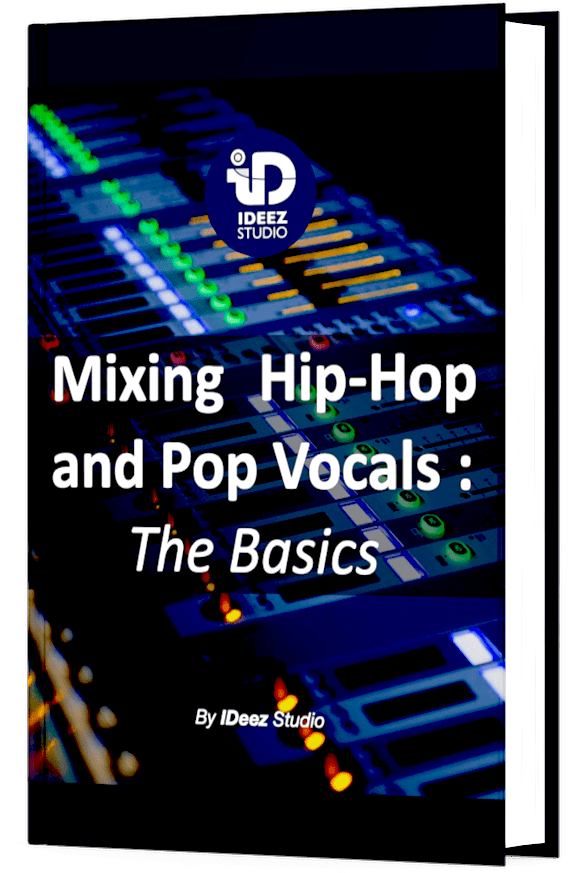When you start diving into the thousands of YouTube videos about mixing vocals, one plugin that seems to be at every turn is Soothe2 by Oeksound.
While it may present itself as the magic answer to all your mixing hardships, with a hefty price tag, many producers wonder whether its sophisticated AI-driven resonance suppression capabilities are actually worth the cost.
Beyond the fact that it isn’t the most budget-friendly option out there, it also utilizes iLok for copy protection, and that might not be everyone’s cup of tea. Luckily, there are several alternative plugins to Soothe2 we’ve come across, some of which might actually be worthy competitors.
In this guide, we’re going to explore 9 of the best alternatives to Soothe2, including free and paid options.

What Is Soothe2?
The team at Oeksound refers to Soothe2 as an “intelligent resonance attenuator.” Basically, the plugin automatically detects and reduces resonances in any audio you feed it.
Back in the olden days (a.k.a. five years ago), we had to manually adjust EQ bands in whatever EQ plugin we were using to pinpoint and mitigate annoying, resonant frequencies.
The ultimate goal?
Get rid of resonances that overpower the mix and contribute to the unpleasantly harsh distortion that comes from sub-par recordings. Now, you might be asking, “Can’t I just do this with a regular dynamic EQ, like F6 from Waves?”
Absolutely! The only issue is that the resonant frequency would have to be a single, consistent resonance at a specific frequency band. Of course, most recordings, especially vocals, have multiple resonant spots that fluctuate throughout a song. Trying to handle that with a ton of dynamic EQ bands or plugins would require ridiculous amounts of automation and no doubt impede your workflow.
Soothe2 is unique in that it does all of the automation without you having to lift a finger! It zeroes in on resonant frequencies in the designated range and dials them back based on your attenuation setting. Its efficiency alone is one of the reasons it has amassed such a dedicated following.
So, to truly find a Soothe2 alternative, we need to look for plugins that have a similar design.

1. TBPro Audio DSEQ3 – Best Overall

DSEQ3 from TBProAudio is one of the best alternatives to Soothe2. It is billed as a dynamic spectral equalizer, which puts it in the same vein, though at a much more respectable price point.
Like Soothe2, DSEQ3 can be used to remove digital harshness automatically, using self-adjusting frequency bands, and is wonderful for de-masking in certain frequency regions. You’ll also find a similar mid-side mode and up to four times oversampling.

DSEQ’s “ULTRA” mode is where the plugin truly shines, as it can make surprisingly aggressive adjustments while still preserving clarity and avoiding artifacts. When Soothe2 is pushed too hard, you start hearing the integrity of the original signal drop.
To my ears, it also performs particularly well in the mids and high-mids.
One of the main differences is that DSEQ3 requires initial training on the material it will process. However, once calibrated, it often delivers even more pristine sound results than Soothe2.
✅ PROS ✅
✅ Incredibly flexible dynamic EQ functionality
✅ Numerous automated parameter modes
✅ Selectable liner and natural phase filters
❌ CONS ❌
❌ Needs to calibrate audio first
2. Baby Audio Smooth Operator – Most Budget-Friendly

With the rising popularity of Soothe 2, there are many plugin developers trying to replicate its success. Yet, few have come as close as Baby Audio’s Smooth Operator. This plugin operates pretty similarly by identifying and reducing resonant frequencies as they appear.
Compared to Soothe2, Smooth Operator is much simpler in its design, though with an ultra-low price point, it’s hard to complain.

One of my main qualms with the plugin is that it only does well when you use it to adjust a frequency or two. However, when you try to use it on an entire mix or group of vocals to get rid of overall harshness, you begin hearing artifacts. In some cases, if pushed too hard, it can make the mix sound even harsher.
The moral of the story is that it requires far more care than Soothe2 and should only be used subtly.
✅ PROS ✅
✅ Inexpensive alternative to Soothe2
✅ Organic and intelligent processing
✅ Clean interface
❌ CONS ❌
❌ Artifacts become present when pushed
3. iZotope Ozone 11 and Neutron 4 – Most Versatile

I just recently upgraded to Ozone 11 and fell in love with the three new modules—Spectral Shaper, Stabilizer, and Clarity—each of which bears a strong resemblance to Soothe2.
The same thing goes for Neutron 4 and its Sculptor module, which mirrors the same basic functionality of Soothe 2.
Looking for a professional sound engineer specializing in pop and hip-hop music ? You’re in the right place! Mixing, mastering, production, editing,… we’ve got it all covered!
Let’s start now!
All of these modules in Ozone and Neutron work by damping resonances in the spectral domain to provide clearer, more balanced mixes. if I had to pick my favorite module of the bunch for the job, it’d be Ozone’s Spectral Shaper. I also love the fact that you can add references to it to achieve the same frequency balance as a well-recorded or mixed vocal, instrument, or full track.
Unfortunately, you can’t purchase these modules separately, so they aren’t exactly “cheaper” alternatives, though it is helpful to know for anyone who has invested or is thinking of investing in iZotope’s plugin suites.
✅ PROS ✅
✅ Versatile plugin suite
✅ Great referencing capabilities
✅ Plenty of unique modules to choose from
❌ CONS ❌
❌ CPU-intensive
4. Soundtheory Gullfoss – Best for Mastering

Gullfoss is another intelligent EQ plugin that claims to help clear up issues in both mixes and individual tracks using a proprietary EQ process. However, it’s different from Soothe2 in that the plugin places more emphasis on solving masking issues and increasing clarity than dealing with resonances.
With that said, I think it actually works pretty well for taming harshness. It uses a computational auditory perception model, which the company claims is “not AI,” but rather a constantly-self-adjusting EQ that can make changes at up to 300 times per second, all while maintaining a surprising level of phase coherence.

Essentially, Soundtheory created a formula to help mix sound better using a transparent VST.
The interface can be a bit confusing when you first try it out, and the results can be quite subtle, which makes it difficult to A/B with Soothe2. However, I think it’s the subtly that makes it such a viable plugin for taming mixes. I’d recommend it for mastering purposes if anything.
✅ PROS ✅
✅ Easy to use
✅ Treats the entire frequency spectrum
✅ Great for adding clarity to entire mixes
❌ CONS ❌
❌ Results can sometimes be too subtle
5. Mastering the Mix RESO – Best Interface

Mastering the Mix has a killer suite of mixing and mastering tools that are made to make the process of finalizing tracks quicker and easier. I’ve been using REFERENCE2 and BASSROOM for a few years now, and I’ve become a huge fan of the developer.
When RESO came out, it was meant to offer a cheaper alternative to Soothe2. It shows excessive resonances that might be hurting your mix and fixes them dynamically without thinning things out.
Out of all the alternatives on this list, RESO has my favorite interface. It’s clean, simple, and intuitive from the get-go.

The auto-detection works nicely on most instruments, including vocals, drums, and acoustic guitars, and the sound is as transparent as the company claims it is.
If you don’t want to spend a ton of money on Soothe2, yet you want a plugin that makes it easy to hone in on and reduce resonances in a heartbeat, RESO is a solid choice.
✅ PROS ✅
✅ Automatic resonance finder
✅ Clean and simple interface
✅ Maintains clarity
❌ CONS ❌
❌ Missing resonances quite often
6. Waves Silk Vocal – Best for Vocals

This past year, Waves launched a new plugin called Silk Vocal, which dynamically reduces harsh, unwanted resonances in vocals to make them sound cleaner, clearer, and more professional.
When you buy Silk Vocal, you get the regular Silk Vocal plugin and Silk Vocal Live, which is better for broadcast or live use thanks to its lower latency.
There are three clearly-marked knobs that allow you to adjust the dynamic reduction in either the lows, mids, or highs. There are also a few additional onboard controls, including a compressor, which stems from the famed RVox plugin, and a gate.

I love that it comes with presets carefully tailored to different vocal types. However, you have to approach it with caution, as it’s easy to overprocess with this plugin and squash the life out of your vocals.
It’s also worth noting that it does not come with a spectrum analyzer like Soothe2, so you have to just assume that it’s working on the selected frequencies as you intend. Overall, however, if you want a feature-packed plugin that’s easy to throw on vocal and call it a day, Silk is a top-tier choice.
✅ PROS ✅
✅ Silky sound quality
✅ Very user-friendly interface
✅ Light CPU usage
❌ CONS ❌
❌ Not the most versatile
7. Wavegrove Vastaus – Best Free Alternative

One of our favorite free alternatives to Soothe2 is Vastaus. Like Soothe2, it’s a resonance reduction plugin that helps balance out individual tracks to reduce overall harshness. However, it only adjusts resonances in the higher frequencies.
While it might be lacking versatility, it’s an excellent choice for high-frequency instruments like cymbals and hi-hats and actually works quite well with harsh sibilance. The plugin includes oversampling and allows you to adjust any muffled artifacts through the various parameters.
However, it’s nowhere near as selective as Soothe2 and should only be used when you want to smooth out the top end.
✅ PROS ✅
✅ Aesthetically-pleasing GUI
✅ Smooths high end
✅ Completely free
❌ CONS ❌
❌ Only works on the high-end

8. TDR Nova GE – Best Dynamic EQ Alternative

If you don’t want to go the fully automated route like the plugins listed above, you can go the dynamic EQ route with a free plugin like TDR Nova. This dynamic EQ works by allowing the user to target specific frequencies and reduce them using a threshold-style parameter.
The main difference is that you won’t get the same de-resonating function as with Soothe2. That said, it can be powerful if you’re after only a few resonances. Plus, the free price tag doesn’t hurt!
✅ PROS ✅
✅ Free (not the GE version!)
✅ Excellent sound quality
✅ Versatile dynamic EQ functionality
❌ CONS ❌
❌ No automatic resonance detection
9. Mitigate – Best for FL Studio Users

If you’re an FL Studio user, you’re in luck, as producer and plugin designer Frankie Tedesco recently put out a free plugin that resembles a lot of the same functionality as Soothe2.
Not only does the plugin look awesome, but there’s also plenty going on under the hood. You have a tight multiband compression algorithm that works in tandem with the rainbow portion of the GUI, very similar to what you might get with a dynamic EQ.

Then we have the Problem Solver section, which gets rid of issues that plague many amateur mixes, including harshness, rumble, and mud. Simply turn up the dials, and it does its magic.
The Air Triggers section is also great for high-end harshness, including that found in sibilance and cymbals.
Overall, it may not be the most versatile plugin out there, but I’ve found it to be super useful when you have an idea of what’s wrong with your mix but want to use a fix that’s less manually-laborious.
✅ PROS ✅
✅ Cool, retro interface
✅ Clean multi-band compression algorithm
✅ Clearly-labeled parameters
❌ CONS ❌
❌ Only for FL Studio
Waves Curves Equator (Bonus)

When we wrote this article in May 2024, the 9 plugins listed above were clearly the best options to explore as alternatives to Soothe2. But… that was before Waves Curves Equator saw the light of day in September 2024.
And this new Waves plugin is now clearly establishing itself as one of the best alternatives to Soothe2. As well as being a very intuitive and easy-to-use plugin, it’s a super-complete alternative in terms of features, enabling you to perform very precise processing.
ℹ️ Want to learn more about Curves Equator? All the information you’ll need are in this article: Waves Curves Equator: Better Than Soothe2 ?
And for a much more affordable price than Soothe, Curves Equator could well be a better plugin than its now rival. Thanks in particular to the intelligent “Learn” feature, which analyzes the frequency spectrum of the incoming source and automatically applies a correction to balance it.
The “Advanced Controls” window also features many interesting settings that can be useful in many different situations. I really recommend you give this new Waves plugin a try!
✅ PROS ✅
✅ Very good value for money
✅ Lots of advanced features
✅ Smart “Learn” feature
✅ High quality suppression with few artifacts
❌ CONS ❌
❌ Well, I don’t see any
Tame Harshness for Good
If Oeksound’s Soothe2 were a person, it might be featured on the cover of TIME magazine as one of the most powerful and game-changing plugins on the market today. Though there are several great alternatives, I’ve yet to find a plugin that hits the mark in terms of versatility, efficiency, and style.
However, if you’re still unsure about spending money on Soothe2, I recommend trying the above plugins first to see if any of them work for your needs!
Related Articles:
My favorite tools for mixing pop and hip-hop music:
Plugins
In the field of auto-tune, I’m convinced that nothing’s better and more efficient than Antares Auto-Tune Pro. As for the EQ’s, FabFilter Pro-Q3 and Slate Digital Infinity EQ are, in my opinion, the best tools. For compression, I have 2 favorites plugins: Waves RComp and UAD EL8 Distressor.
As for reverb, I’m a big fan of the Soundtoys Little Plate, but generally, I go for the Valhalla VintageVerb for its versatility. I also love the Arturia Rev PLATE-140 and the UAD Pure Plate for its organic side.
Headphones
The closed headphones I love and will always love using for mixing pop and hip-hop music are the Beyerdynamic DT-770. As for the best open-back headphones, I use the Sennheiser HD600 headphones, and I’m really happy of them!
Monitors
Having a pair of Yamaha HS7 in its studio or home studio is always cool for more excitement while listening to your mixes. The Adam Audio T7V monitors are also super accurate. In my studio, I also have a pair of Genelec 8030 for their reliability.
Hardware gear
For anyone who wants to start using hardware in their mixes, I always recommend these 2 units from Klark Teknik: the EQP-KT and the 76-KT. Don’t forget to use good converters, such as the Apollo interfaces. This is essential for a good rendering.






